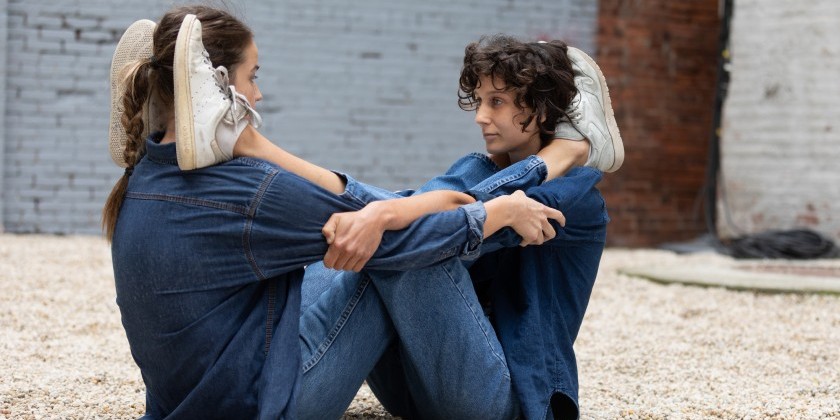Celebrating the Thirtieth Season of the Performance Mix Festival (Part III)

Barbara Mahler on the Intersection of Choreography and Teaching
Performance Mix Festival
Abrons Art Center
June 6-11, 2016
Mahler performs on Thursday, June 9 in Abron’s Experimental Theater at 7PM
Tickets are $20 (or free admission where indicated online) and can be purchased online at www.abronsartscenter.org or by calling 212-352-3101.
Performer, choreographer and educator Barbara Mahler returns to the Performance Mix Festival with her solo IT OcCurS to mE. Mahler has known festival founder Karen Bernard for years, beginning when they shared their work in the same program in the ‘70s. They continued to bump into one another in their Tribeca neighborhood where they both lived and worked at that time.
The two came together again this past May when they revived one of Bernard’s works Vinyl Retro (1999) for a Dance and Process performance at The Kitchen. “It was rare for both of us,” Bernard says. “For me, to be working with someone and for her to be dancing in another person’s work.”
“I was on another planet,” Mahler says with a chuckle. Bernard’s dances are peppered with props and video while Mahler is drawn to work where the body alone is the focal point. Despite their contrasting approach, the two veterans had great fun working together.
Mahler didn’t grow up dancing like her counterpart. Instead, she stumbled upon it while studying at Hunter College. “I walked into the dance club which was on Wednesday afternoons. There was Dorothy [Vislocky] and her infamous drum.”

She soon enrolled as a dance major, taking any classes available. It was at Hunter where she first learned of Susan Klein’s Klein Technique™ through Vislocky — both of whom had a deep impact on Mahler.
After graduation she began studying at the Klein/Barry Studio while working a host of jobs including as a bank teller and house cleaner. “The technique was the only thing that gave me a language that I could understand myself as a mover,” she says.
Today, she continues to teach in the Klein Technique tradition in New York and abroad, describing it as “an original method of developing movement and posture through deep understanding of skeletal and muscular structure of the body and its expressive possibilities.”
The venerable artist has trained hundreds of dancers and non-dancers while continuing to create solos and dances for small groups that are pregnant with nuance and skill. She spoke with The Dance Enthusiast about how her teaching and choreographic life intersect. Here is an excerpt from the conversation.

Trina Mannino for The Dance Enthusiast: What parallels, if any, do you find in your teaching and choreography?
Barbara Mahler: All of my work and research in the realm of re-educating my own body has laid a foundation for me… My teaching, in turn, inspired my dancing and choreographic life. In the beginning of my dance making, I was choreographing mostly solos. And those dances were usually too hard for me. I was constantly challenging myself to get better.
TDE: Does Klein Technique™ influence your choreographic process?
BM: I’m not sure it informs my process, but the work is in my body which is what I use to create the movement. I work best with people and dancers who have studied with me. There is a particular clarity that I look for, self-understanding and grounded-ness [that comes from studying the technique].

TDE: How has your choreographic work evolved?
BM: It started off being more emotional, simple and sparse. I went through a narrative period. It’s continued to grow technically, but it supports the simplicity and preciseness of my early work. At its best, it develops slowly.
TDE: Over the years, you've taught hundreds of dancers and non-dancers. In what ways, has "taking class" changed?
BM: Taking class has gone through many phases; from being a purely physical practice to a conceptual practice. Yoga, Pilates and weight training have had strong influence on dancers. Financial stresses have created more teachers in the dance community for that kind of work, and in turn, have affected the bodies and minds of many — which is neither good nor bad. Survival has become more and more difficult.
The time for the development of work is not as available and so the artistic process has changed for many to accommodate these real life situations. In some ways, I see the mind and intellect has — at the present time — a stronger emphasis than the body or the spirit.













